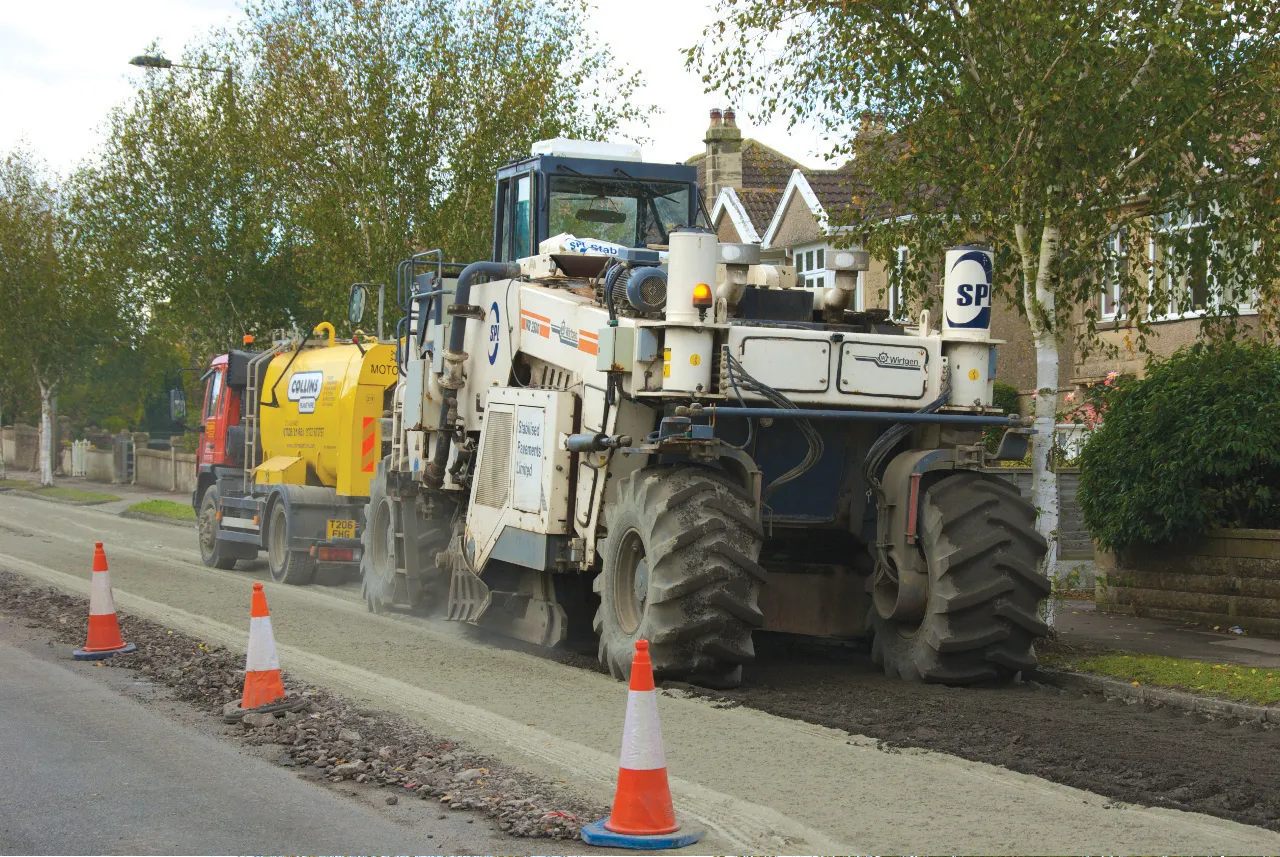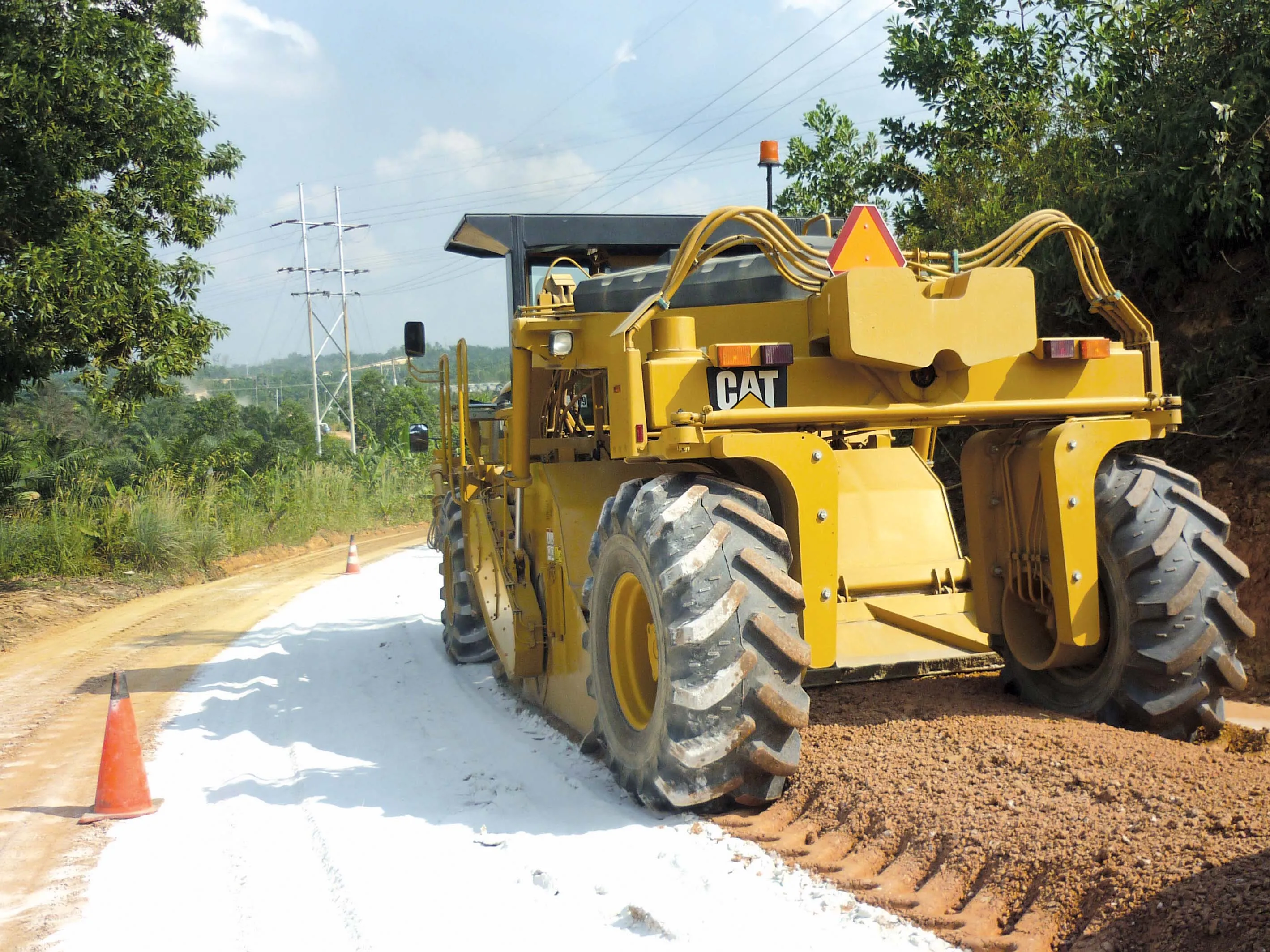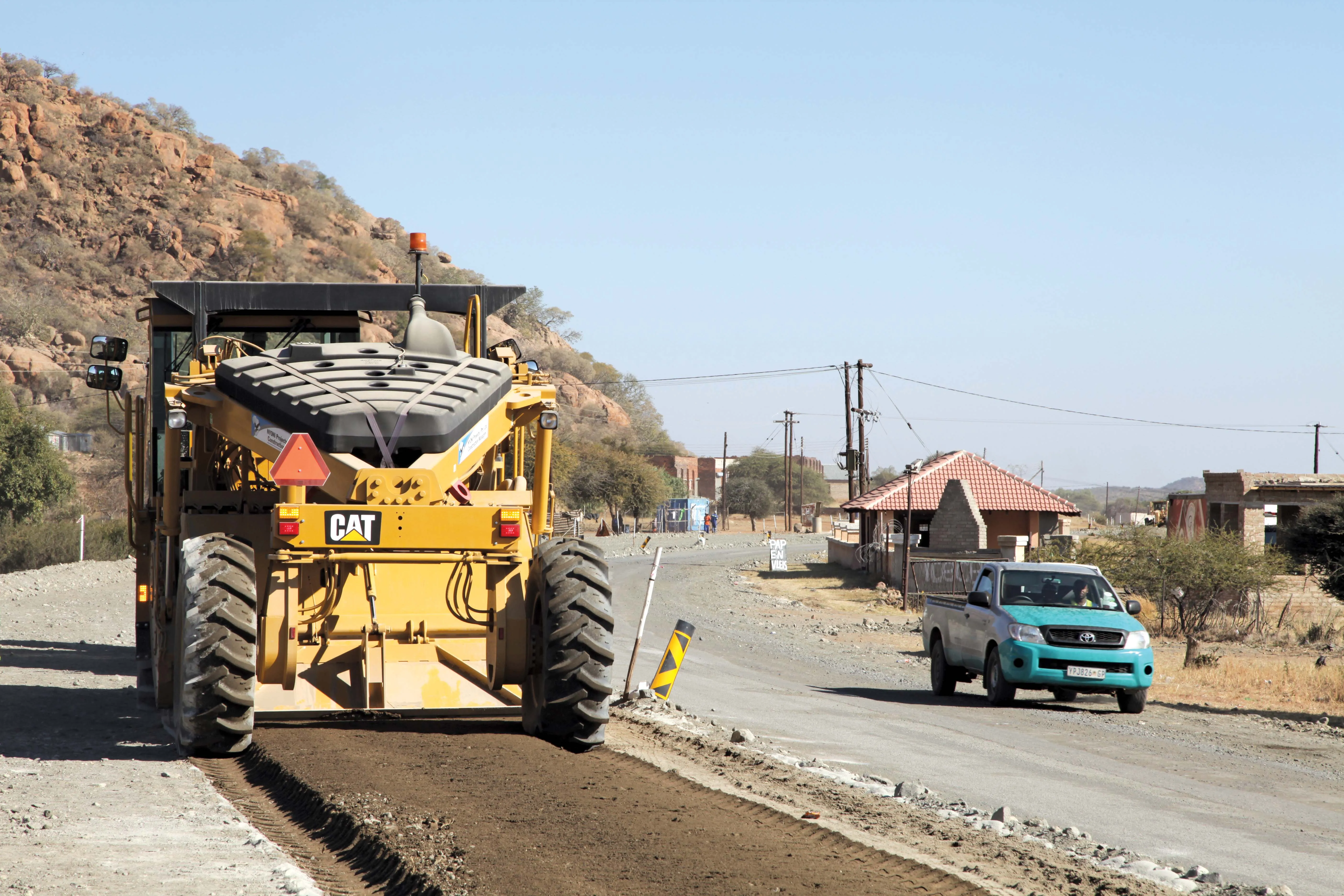Stabilisers bring recycling improvements to roads in the UK and Armenia. The local road authorities near the UK city of Bath have saved nearly €250,500 on the cost of repairing a 400m long section of the B3110 Midford Road. This saving has been achieved by opting to recycle and strengthen in-situ the existing surface, instead of using conventional full depth pavement reconstruction.
February 13, 2012
Read time: 6 mins

Stabilisers bring recycling improvements to roads in the UK and Armenia
The local road authorities near the UK city of Bath have saved nearly €250,500 on the cost of repairing a 400m long section of the B3110 Midford Road. This saving has been achieved by opting to recycle and strengthen in-situ the existing surface, instead of using conventional full depth pavement reconstruction. The work has been carried by the council's design group, in partnership with maintenance contractorThe road surface upgrade was required as the existing road was disintegrating though all its layers and needed repair.
In addition to the construction cost savings, in-situ recycling also provided substantial environmental benefits including a reduction in carbon dioxide emissions as well as reduced materials transportation and less use of newly extracted materials. At the same time, the work reduced disruption to the road network.
The bulk of the cost saving came from not having to extract and dispose of waste material in a special, licensed landfill. Instead, the existing road materials were re-used as the primary source of aggregates and these were recycled and strengthened in-situ cutting waste. In addition, an estimated 12tonnes less of CO2 emissions were achieved using in-situ recycling.
The work was necessary as the stretch of road was in urgent need of strengthening. Site investigations and subsequent materials testing showed that the road pavement contained a high proportion of tar material. The various road repair options available were examined and it was clear that in-situ recycling offered a cost effective and environmentally beneficial solution. With some 1,800tonnes of bituminous materials in the road pavement, it made sense to re-use the existing surface rather than extracting this and disposing it off-site at a licensed waste site around 80km away. Tar material disposal costs alone would have been approximately €205,000 and some of this material was classed as special hazardous waste, which meant that it probably needed incineration, costing around €1,139/tonne.
Atkins had previous experience of in-situ recycling and with the added complication of the tar, the process proved to be the best option to reconstruct this particular section of road. In-situ recycling also proved less disruptive to local traffic than conventional reconstruction as it saved about 180-200 movements of 20tonne trucks, as well as improving the carbon footprint of the work.
By using in-situ recycling for the road, the authorities also made cost savings on the bituminous base and binder courses that would have been used in conventional pavement reconstruction. The construction work would have cost around €626,450 using conventional pavement reconstruction methods and would had taken longer and been more disruptive to road users. The in-situ repair proved to be quick to carry out on-site and was also able to cope with light traffic almost straight away as a temporary running surface, prior to applying the final surface course. The numerous benefits and success of this in-situ repair technique mean that the authorities will be using it on similar road strengthening schemes in future.
The in-situ recycling process was carried out by a specialist road recycling and specialist contractor, Stabilised Pavements, using a stabiliser to rework the damaged road pavement to depths of up to 320mm. The stabiliser simultaneously mixed in specific quantities of 70% cement and 30% pulverised fuel ash (PFA). This was applied in a powder blanket across the surface of the remixed material at a ratio of 8% by volume of the in-situ material's dry density, as required by the specification. Depending on the in-situ recycling work being carried out and the application, lime, cement, pulverised fuel ash, bitumen emulsion, foamed bitumen and water can be mixed in by the stabiliser. The mixture can then be compacted, re-profiled, re-rolled and overlaid with a final surface for a fast return to traffic.
For this job, the quantity of the strengthening agent was determined from pre-contract materials testing and mixed in a one-pass operation with the stabiliser at the designated depth of 180mm. Water was added into the mix at the same time to achieve the required optimum moisture content. The cement and PFA complement each other as the cement provides an initial gain in strength of the recycled materials, while the PFA slows hydration and helps increase strength over time. The process was performed in accordance with the relevant specification for structural maintenance of highway pavements by cold in-situ recycling.
The 10m wide carriageway was treated in two separate halves. Whilst one half of the carriageway was being recycled and strengthened, the other half remained open for one-way traffic during a short diversion route. Once the required levels and compaction was achieved the surface of the in-situ repaired carriageway was sprayed with a sealing tack coat and gritted as a temporary running surface for traffic. The process was then repeated for the other side of the carriageway using the adjacent recycled carriageway for one-way traffic.
Although the in-situ recycled and stabilised base course bulked-up during processing, the centre-line crown levels were adjusted for the new road surface. The crown was raised by 80mm, and 10mm along the channels, increasing the cross falls to 6-7%. Atkins's surfacing contractor Bardon Contracting followed on and overlaid SPL's rejuvenated full width road base with a conventional 50mm thick hot rolled asphalt surface course for a fast return to full traffic.
Meanwhile in Armenia, a
The contractor's new Caterpillar machines include the RM500, as well as a PM102 planer, a CS74 soil compactor, a 140H grader, and a BB651C paver. The machine was first used to carry out a demonstration of asphalt and road base recycling and stabilisation on a 250m long by 7.5m wide road, in three passes. A depth of 200-250mm was strictly maintained due to the shallow location of underground pipelines. Water was mixed into the reclaimed asphalt and base material before compaction and the machine produced sub-base to grade, prior to the 60mm asphalt wearing course being laid with a BB651C paver the next day. While the demo team effectively demonstrated the power, capability and efficiency of the RM500 rotary mixer, Chanaparh's new Cat CS74 soil compactor and Cat 140H grader were also put to work.
After the demonstration, Chanaparh put its new RM500 to work and took the machine to a small village near Yerevan where it reclaimed a 750m section in five hours. The work included recycling 100-140mm of worn asphalt and another 100mm of road base. Given that the country has some 8,000km of roads in all and experiences savage winters that can result in rapid surface failure and potholes due to the freeze thaw effect, the contractor expects to find plenty of work for its stabiliser in the future.







